Northern Aurora Nature the Jungle Book Concept Art 1967
 Embossed embrace of start edition with artwork past John Lockwood Kipling | |
| Author | Rudyard Kipling |
|---|---|
| Illustrator | John Lockwood Kipling (Rudyard'due south father) |
| Country | Britain |
| Language | English |
| Series | The Jungle Books |
| Genre | Children's volume |
| Publisher | Macmillan |
| Publication date | 1894 |
| Preceded by | "In the Rukh" |
| Followed by | The Second Jungle Volume |
| Text | The Jungle Book at Wikisource |
The Jungle Book (1894) is a collection of stories by the English writer Rudyard Kipling. Most of the characters are animals such as Shere Khan the tiger and Baloo the carry, though a principal character is the boy or "man-cub" Mowgli, who is raised in the jungle by wolves. The stories are set in a woods in India; one place mentioned repeatedly is "Seonee" (Seoni), in the central state of Madhya Pradesh.
A major theme in the book is abandonment followed by fostering, as in the life of Mowgli, echoing Kipling's own childhood. The theme is echoed in the triumph of protagonists including Rikki-Tikki-Tavi and The White Seal over their enemies, besides as Mowgli's. Another important theme is of law and freedom; the stories are non about animal behaviour, however less most the Darwinian struggle for survival, but virtually human archetypes in animal grade. They teach respect for authority, obedience, and knowing one'southward identify in guild with "the law of the jungle", but the stories as well illustrate the liberty to move between different worlds, such as when Mowgli moves between the jungle and the village. Critics accept too noted the essential wildness and lawless energies in the stories, reflecting the irresponsible side of human nature.
The Jungle Volume has remained pop, partly through its many adaptations for pic and other media. Critics such as Swati Singh have noted that fifty-fifty critics wary of Kipling for his supposed imperialism have admired the power of his storytelling.[ane] The book has been influential in the scout movement, whose founder, Robert Baden-Powell, was a friend of Kipling'south.[two] Percy Grainger composed his Jungle Book Cycle around quotations from the book.
Context
The stories were first published in magazines in 1893–94. The original publications contain illustrations, some by the author's father, John Lockwood Kipling. Rudyard Kipling was born in Republic of india and spent the offset six years of his childhood there. After about ten years in England, he went dorsum to India and worked there for about half-dozen and a half years. These stories were written when Kipling lived in Naulakha, the home he built in Dummerston, Vermont, in the The states.[3] At that place is evidence that Kipling wrote the collection of stories for his daughter Josephine, who died from pneumonia in 1899, anile 6; a showtime edition of the book with a handwritten annotation by the author to his young girl was discovered at the National Trust'due south Wimpole Hall in Cambridgeshire, England, in 2010.[4]
Book
Description
The tales in the book (as well as those in The Second Jungle Volume, which followed in 1895 and includes eight farther stories, including five about Mowgli) are fables, using animals in an anthropomorphic manner to teach moral lessons. The verses of "The Police force of the Jungle", for instance, lay down rules for the safety of individuals, families, and communities. Kipling put in them nearly everything he knew or "heard or dreamed about the Indian jungle".[5] Other readers have interpreted the piece of work as allegories of the politics and society of the time.[half-dozen]
Origins

Places in India named past Kipling in versions of the stories
The stories in The Jungle Book were inspired in part by the ancient Indian fable texts such every bit the Panchatantra and the Jataka tales.[seven] For example, an older moral-filled mongoose and snake version of the "Rikki-Tikki-Tavi" story past Kipling is found in Volume five of Panchatantra.[viii] In a letter to the American author Edward Everett Unhurt, Kipling wrote,[7]
The idea of fauna-tales seems to me new in that it is a most ancient and long forgotten idea. The actually fascinating tales are those that the Bodhisat tells of his previous incarnations ending always with the beautiful moral. Most of the native hunters in Bharat today think pretty much along the lines of an beast'southward brain and I take "cribbed" freely from their tales.
—Rudyard Kipling[7] [nine]
In a alphabetic character written and signed past Kipling in or effectually 1895, states Alison Alluvion in The Guardian, Kipling confesses to borrowing ideas and stories in the Jungle Volume: "I am afraid that all that code in its outlines has been manufactured to meet 'the necessities of the case': though a little of it is bodily taken from (Southern) Esquimaux rules for the division of spoils," Kipling wrote in the letter. "In fact, it is extremely possible that I take helped myself promiscuously but at present cannot retrieve from whose stories I have stolen."[10]
Setting
Kipling lived in Republic of india as a kid, and most of the stories[a] are evidently set at that place, though it is not entirely articulate where. The Kipling Lodge notes that "Seonee" (Seoni, in the central Indian land of Madhya Pradesh) is mentioned several times; that the "cold lairs" must be in the jungled hills of Chittorgarh; and that the kickoff Mowgli story, "In the Rukh", is fix in a woods reserve somewhere in Due north India, due south of Simla. "Mowgli's Brothers" was positioned in the Aravalli hills of Rajasthan (northwestern Republic of india) in an early on manuscript, later changed to Seonee, and Bagheera treks from "Oodeypore" (Udaipur), a journeying of reasonable length to Aravalli but a long way from Seoni.[11] [12] Seoni has a tropical savanna climate, with a dry out and a rainy season. This is drier than a monsoon climate and does not back up tropical rainforest.[thirteen] Forested parks and reserves that claim to be associated with the stories include Kanha Tiger Reserve, Madhya Pradesh,[14] and Pench National Park, near Seoni.[fifteen] Notwithstanding, Kipling never visited the expanse.[11]
Capacity
The book is arranged with a story in each affiliate. Each story is followed past a poem that serves as an epigram.
| Story title | Summary | Epigrammatic poem | Notes | Image |
|---|---|---|---|---|
| Mowgli's Brothers | A male child is raised by wolves in the Indian jungle with the assistance of Baloo the bear and Bagheera the blackness panther, who teach him the "Police of the Jungle". Some years later, the wolfpack and Mowgli are threatened by the tiger Shere Khan. Mowgli brings burn, driving off Shere Khan but showing that he is a man and must leave the jungle. | "Hunting-Song of the Seeonee Pack" | The story has been published equally a short book: Night-Song in the Jungle. | "The tiger'southward roar filled the cave with thunder." 1894 |
| Kaa's Hunting | During the time Mowgli was with the wolf pack, he is abducted by the Bandar-log monkeys to the ruined city. Baloo and Bagheera fix out to rescue him with Kaa the python. Kaa defeats the Bandar-log, frees Mowgli, and hypnotises the monkeys and the other animals with his trip the light fantastic toe. Mowgli rescues Baloo and Bagheera from the spell. | "Road Song of the Bandar-Log" | Mowgli made leader of the Bandar-log by John Charles Dollman, 1903 | |
| Tiger! Tiger! | Mowgli returns to the man village and is adopted by Messua and her husband, who believe him to be their long-lost son. Mowgli leads the hamlet boys who herd the village's buffaloes. Shere Khan comes to hunt Mowgli, but he is warned by Gray Brother wolf, and with Akela they find Shere Khan comatose, and stampede the buffaloes to trample Shere Khan to death. Mowgli leaves the village, and goes back to hunt with the wolves until he becomes a man. | "Mowgli's Song" | The story's title is taken from William Blake'south 1794 poem "The Tyger". | Tiger! Tiger! by W. H. Drake, 1894 |
| The White Seal | Kotick, a rare white-furred fur seal, sees seals beingness killed by islanders in the Bering Sea. He decides to detect a safety dwelling house for his people, and subsequently several years of searching as he comes of age, eventually finds a suitable place. He returns home and persuades the other seals to follow him. | "Lukannon" | Many names in the story are Russian,[b] every bit the Pribilof Islands had been bought (with Alaska) by the United States in 1867, and Kipling had access to books about the islands.[sixteen] | The White Seal, 1894 |
| Rikki-Tikki-Tavi | An English family have just moved to a business firm in Bharat. They find Rikki-Tikki-Tavi the mongoose flooded out of his burrow. A pair of big cobras, Nag and Nagaina, try unsuccessfully to kill him. He hears the cobras plotting to kill the father in the house, and attacks Nag in the bathroom. The sound of the fight attracts the father, who shoots Nag. Rikki-Tikki-Tavi destroys Nagaina's eggs and chases her into her "rat-hole" where he kills her too. | "Darzee'south Chaunt" | This story has been published equally a short book. | Nag and Rikki-Tikki-Tavi, 1894 |
| Toomai of the Elephants | Big Toomai rides Kala Nag the elephant to take hold of wild elephants in the hills. His son Little Toomai comes to help and risks his life throwing a rope up to one of the drivers. His father forbids him to enter the elephant enclosure again "until he has seen the elephants dance" (which no man ever did). I night he follows the elephants walking without drivers out of the camp, and is picked up by Kala Nag; he rides into the elephants' meeting place in the jungle, where they dance. On his return he says "I've seen the elephants trip the light fantastic" and falls comatose from tiredness. The drivers follow the elephants' tracks into the forest and notice a newly cleared glade, showing that Little Toomai has told the truth. When they come up dorsum, he is hailed by both hunters and elephants, and the oldest and wisest hunter says that when Footling Toomai grows up, he'll be called Toomai of the Elephants like his grandfather. | "Shiv and the Grasshopper" | This story has been published as a brusque book, and was the footing of the 1937 motion picture Elephant Boy.[17] | Toomai at the elephant camp, 1894 |
| Her Majesty'due south Servants[c] | On the dark earlier a British armed services parade for the Amir of Transitional islamic state of afghanistan, the regular army's working animals—mule, camel, horse, bullock, elephant—hash out what they practise in battle and how they feel almost their work. Information technology is explained to the Afghans that men and animals obey the orders carried down from the Queen. | "Parade-Song of the Camp Animals" is gear up to the tunes of several well-known songs.[d] | "'Everyone tin can be forgiven for existence scared in the night,' said the Troop-Horse." 1894 |
Characters
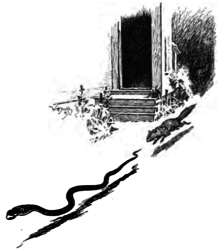
Many of the characters (marked *) are named only for the Hindustani names of their species: for instance, Baloo is a transliteration of Hindustani भालू/بھالو Bhālū, "conduct". The characters (marked ^) from "The White Seal" are transliterations from the Russian of the Pribilof Islands.
- Akela * – A wolf
- Bagheera * – A black panther
- Baloo * — A behave
- Bandar-log *[e] – A tribe of monkeys
- Chil * – A kite, in earlier editions called Rann (रण Raṇ, "battle")
- Chuchundra * – A muskrat
- Darzee *[f] – A tailorbird
- Male parent Wolf – The father wolf who raised Mowgli as his ain cub
- Grey brother – One of Female parent and Male parent Wolf'south cubs
- Hathi * – An Indian elephant
- Ikki * – A porcupine
- Kaa * – A python
- Karait * – A krait
- Kotick ^ – A white seal
- Mang * – A bat
- Mor * – An Indian peafowl
- Mowgli – Chief character, the young jungle boy
- Nag * – A male cobra
- Nagaina * – A female cobra, Nag's mate
- Raksha [one thousand] – The Mother wolf who raised Mowgli as her own cub
- Rikki-Tikki-Tavi – A mongoose
- Sea Catch ^ – A seal and Kotick's begetter
- Sea Moo-cow – A (Steller's) sea cow
- Sea Vitch ^ – A walrus
- Shere Khan * — A tiger
- Tabaqui * – A jackal
Illustrations
The early editions were illustrated with drawings in the text past John Lockwood Kipling (Rudyard's father), and the American artists W. H. Drake and Paul Frenzeny.[19]
Editions and translations
The volume has appeared in over 500 print editions,[20] and over 100 audiobooks.[21] It has been translated into at least 36 languages.[22]
Themes

Abandonment and fostering
Critics such every bit Harry Ricketts have observed that Kipling returns repeatedly to the theme of the abandoned and fostered child, recalling his own childhood feelings of abandonment. In his view, the enemy, Shere Khan, represents the "malevolent would-be foster-parent" who Mowgli in the end outwits and destroys, just as Kipling as a male child had to face Mrs Holloway in place of his parents. Ricketts writes that in "Mowgli's Brothers", the hero loses his human parents at the showtime, and his wolf fosterers at the conclusion; and Mowgli is once more rejected at the stop of "Tiger! Tiger!", but each time is compensated by "a queue of would-be foster-parents" including the wolves, Baloo, Bagheera and Kaa. In Ricketts's view, the power that Mowgli has over all these characters who compete for his affection is part of the book'due south appeal to children.[23] The historian of India Philip Mason similarly emphasises the Mowgli myth, where the fostered hero, "the odd man out among wolves and men alike", somewhen triumphs over his enemies. Mason notes that both Rikki-Tikki-Tavi and The White Seal exercise much the same.[24]
Law and freedom
The novelist Marghanita Laski argued that the purpose of the stories was non to teach nearly animals but to create homo archetypes through the fauna characters, with lessons of respect for potency. She noted that Kipling was a friend of the founder of the Scout Movement, Robert Baden-Powell, who based the inferior scout "Wolf Cubs" on the stories, and that Kipling admired the motility.[23] [25] Ricketts wrote that Kipling was obsessed by rules, a theme running throughout the stories and named explicitly as "the police force of the jungle". Function of this, Ricketts supposed, was Mrs Holloway's evangelicalism, suitably transformed. The rules required obedience and "knowing your place", but also provided social relationships and "freedom to move between different worlds".[23] Sandra Kemp observed that the constabulary may be highly codification, but that the energies are also lawless, embodying the part of human nature which is "floating, irresponsible and self-absorbed".[23] [26] There is a duality between the two worlds of the village and the jungle, but Mowgli, like Mang the bat, tin travel between the 2.[23]
The novelist and critic Angus Wilson noted that Kipling's law of the jungle was "far from Darwinian", since no attacks were allowed at the water-hole, even in drought. In Wilson'southward view, the popularity of the Mowgli stories is thus not literary merely moral: the animals can follow the law easily, simply Mowgli has human joys and sorrows, and the burden of making decisions.[23] [27] Kipling's biographer, Charles Carrington, argued that the "fables" almost Mowgli illustrate truths directly, as successful fables practice, through the graphic symbol of Mowgli himself; through his "kindly mentors", Bagheera and Baloo; through the repeated failure of the "bully" Shere Khan; through the endless merely useless talk of the Bandar-log; and through the law, which makes the jungle "an integrated whole" while enabling Mowgli's brothers to live as the "Free People".[28]
The bookish Jan Montefiore commented on the book's residual of police and freedom that "You don't need to invoke Jacqueline Rose on the adult's dream of the child's innocence or Perry Nodelman'south theory of children's literature colonising its readers' minds with a double fantasy of the kid as both noble roughshod and embryo skilful citizen, to run across that the Jungle Books .. requite their readers a vicarious feel of take a chance both equally freedom and as service to a just State".[29]
Reception
Sayan Mukherjee, writing for the Book Review Circle, calls The Jungle Book "1 of the most enjoyable books of my babyhood and even in adulthood, highly informative as to the outlook of the British on their 'native population'."[30]
The academic Jopi Nyman argued in 2001 that the book formed part of the construction of "colonial English national identity"[31] inside Kipling's "purple project".[31] In Nyman's view, nation, race and class are mapped out in the stories, contributing to "an imagining of Englishness every bit a site of power and racial superiority."[31] Nyman suggested that The Jungle Book's monkeys and snakes represent "colonial animals"[31] and "racialized Others"[31] within the Indian jungle, whereas the White Seal promotes "'truly English' identities in the nationalist allegory"[31] of that story.[31]
Swati Singh, in his Secret History of the Jungle Book, notes that the tone is like that of Indian sociology, legend-like, and that critics have speculated that the Kipling may take heard similar stories from his Hindu bearer and his Portuguese ayah (nanny) during his childhood in India. Singh observes, too, that Kipling wove "magic and fantasy" into the stories for his daughter Josephine, and that even critics reading Kipling for signs of imperialism could not assistance admiring the power of his storytelling.[1]
The Jungle Volume came to be used as a motivational book by the Cub Scouts, a junior chemical element of the Scouting move. This use of the book's universe was approved by Kipling at the request of Robert Baden-Powell, founder of the Scouting movement, who had originally asked for the author'due south permission for the utilise of the Memory Game from Kim in his scheme to develop the morale and fitness of working-grade youths in cities. Akela, the caput wolf in The Jungle Book, has go a senior figure in the movement; the proper noun is traditionally adopted by the leader of each Cub Scout pack.[ii]
Adaptations
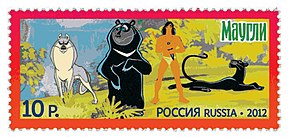
Protagonists from the Soviet animated adaptation, "Маугли" (Mowgli), on a Russian postage postage stamp
The Jungle Book has been adjusted many times in a wide variety of media. In literature, Robert Heinlein wrote the Hugo Honor-winning science fiction novel, Stranger in a Strange State (1961), when his married woman, Virginia, suggested a new version of The Jungle Book, simply with a kid raised past Martians instead of wolves.[32] [33] Neil Gaiman'southward The Graveyard Book (2008) is inspired by The Jungle Book. Information technology follows a infant boy who is found and brought up by the dead in a cemetery. It has many scenes that tin be traced to Kipling, but with Gaiman'south dark twist.[34]
In music, the Jungle Volume cycle (1958) was written by the Australian composer Percy Grainger, an gorging Kipling reader. It consists of quotations from the book, ready as choral pieces and solos for soprano, tenor or baritone.[35] The French composer Charles Koechlin wrote several symphonic works inspired by the volume. BBC Radio broadcast an adaptation on 14 February 1994 and released information technology as a BBC audiobook in 2008.[36] Information technology was directed by Chris Wallis with Nisha 1000. Nayar as Mowgli, Eartha Kitt as Kaa, Freddie Jones as Baloo, and Jonathan Hyde as Bagheera. The music was past John Mayer.[37]
The book's text has been adapted for younger readers with comic volume adaptations such as DC Comics Elseworlds' story, "Superman: The Feral Homo of Steel", in which an infant Superman is raised past wolves, while Bagheera, Akela, and Shere Khan make appearances.[38] Marvel Comics published several adaptations past Mary Jo Duffy and Gil Kane in the pages of Marvel Fanfare (vol. ane). These were collected in the one-shot Curiosity Illustrated: The Jungle Book (2007).[39] Bill Willingham'south comic book series, Fables, features The Jungle Book 's Mowgli, Bagheera, and Shere Khan.[40]
Manga Classics: The Jungle Book was published by UDON Entertainment'due south Manga Classics imprint in June 2017.[41]
Many films accept been based on one or some other of Kipling's stories, including Elephant Boy (1937),[42] Chuck Jones's fabricated for-Idiot box cartoons Rikki-Tikki-Tavi (1975),[43] The White Seal (1975),[44] and Mowgli's Brothers (1976).[45] Many films, too, take been made of the volume equally a whole, such as Zoltán Korda'south 1942 picture show,[46] Disney's 1967 animated film[47] and its 2016 remake,[48] the Russian: Маугли (Mowgli) published as Adventures of Mowgli in the Usa, an animation released betwixt 1967 and 1971, and combined into a single 96-minute feature film in 1973,[49] and the 1989 Italian-Japanese anime The Jungle Book: Adventures of Mogwli.[l]
Stuart Paterson wrote a stage adaptation in 2004, kickoff produced past the Birmingham Sometime Rep in 2004 and published in 2007 by Nick Hern Books.[51]
In 2021 BBC Radio 4 broadcast an adaptation by Ayeesha Menon which resets the story as a "gangland coming-of-age fable" in modern Republic of india.'[52]
Encounter as well
- Feral children in mythology and fiction
Notes
- ^ "The White Seal" is gear up in the Pribilof Islands in the Bering Sea.
- ^ Many of the 'animal linguistic communication' words and names in this story are a phonetic spelling of Russian (probably as spoken with an Aleut accent), for case 'Stareek!' (Старик!) 'one-time man!'; 'Ochen scoochnie' (said by Kotick) 'I am very lonesome' Очень скучный (correctly ways 'very irksome'); holluschick (plural -ie) 'bachelor male seal' (холощик) from холостой ('unmarried'); Matkah (Kotick'south mother, матка, 'dam', 'mother of an creature', or 'womb')
- ^ Originally titled "Servants of the Queen"
- ^ "Cavalry Horses" is set to "Bonnie Dundee". "Elephants of the Gun-Teams" fits the tune and has a like first line to the marching song "The British Grenadiers", as does "Gun-Bullocks". "Spiral-Gun Mules" is set to the tune of the English language folk vocal "The Lincolnshire Poacher" and echoes some of its lines.[18]
- ^ Bandar-log means "Monkey People" in Hindustani
- ^ Darzee is the Hindustani for tailor.
- ^ Raksha is Hindi for "defence."
References
- ^ a b Singh, Swati (2016). Cloak-and-dagger History of the Jungle Book. The Real Press. p. 7. ISBN978-0-9935239-two-2.
- ^ a b "History of Cub Scouting". Boy Scouts of America. Retrieved xxx October 2016.
A strong influence from Kipling's Jungle Book remains today. The terms "Law of the Pack," "Akela," "Wolf Cub," "grand howl," "den," and "pack" all come from the Jungle Book.
- ^ Rao, One thousand. Bhaskara (1967). Rudyard Kipling'south India . Norman, Oklahoma: University of Oklahoma Press.
- ^ "Kipling first edition with writer'due south poignant notation found". BBC New. 8 Apr 2010. Retrieved 26 February 2013.
- ^ Gilmour, David (2003). The Long Recessional: the Imperial Life of Rudyard Kipling. Pimlico. ISBN0-7126-6518-8.
- ^ Hjejle, Benedicte (1983). Fddbek, Ole; Thomson, Niels (eds.). "Kipling, Britisk Indien og Mowglihistorieine" [Kipling, British Republic of india and the Story of Mowgli]. Feitskrifi til Kristof Glamann (in Danish). Odense, Kingdom of denmark: Odense Universitetsforlag. pp. 87–114.
- ^ a b c Kaori Nagai; Caroline Rooney; Donna Landry, Monica Mattfeld, Charlotte Sleigh, Karen Jones (2015). Cosmopolitan Animals. Palgrave Macmillan. p. 267. ISBN978-one-137-37628-2.
{{cite book}}: CS1 maint: multiple names: authors list (link) - ^ January Montefiore (2013). In Fourth dimension's Centre: Essays on Rudyard Kipling. Manchester University Printing. pp. 132–134. ISBN978-one-5261-1129-6.
- ^ Rudyard Kipling (2016). Thomas Penney (ed.). The Letters of Rudyard Kipling: Volume ii: 1890-99. Palgrave Macmillan. p. 168. ISBN978-1-349-63806-two.
- ^ Flood, Alison (31 May 2013). "Rudyard Kipling 'admitted to plagiarism in Jungle Book'". The Guardian . Retrieved 31 May 2013.
- ^ a b Slater, John (23 March 2007). "Seeonee: The Site of Mowgli's Jungle?". The Kipling Society. Retrieved 14 December 2017.
- ^ P. W. I. (September 1969). "REPORT ON Give-and-take MEETING of Feb. 19th" (PDF). Kipling Periodical . Retrieved 7 September 2018.
- ^ "Climate: Sivani (Madhya Pradesh)". Climate-Date.org. Retrieved 15 December 2017.
- ^ "On 'The Jungle Book' trail at Kanha National Park". Dna India. 18 April 2016. Retrieved xviii May 2017.
- ^ Andres, Trisha (15 April 2016). "The Jungle Book: 5 best tours to Rudyard Kipling's Republic of india". The Telegraph . Retrieved eleven December 2017.
- ^ "The White Seal". The Kipling Society. Retrieved xxx October 2016.
- ^ "Elephant Male child (1937) - Robert Flaherty, Zoltan Korda - Synopsis, Characteristics, Moods, Themes and Related - AllMovie". AllMovie.
- ^ "The Musical Settings of Kipling'due south Poesy" (PDF). The Kipling Order. 16 May 2015. Retrieved thirty Oct 2016.
- ^ "The Jungle Book - With Illustrations by John Lockwood Kipling & Others". Victoria and Albert Museum. Retrieved 16 Dec 2017.
- ^ "ti:The Jungle Volume au:Rudyard Kipling". WorldCat. Retrieved 20 December 2017.
- ^ "ti:The Jungle Book au:Rudyard Kipling". WorldCat. Retrieved xx December 2017.
- ^ "The Jungle Book, Rudyard Kipling". WorldCat. Retrieved sixteen December 2017.
- ^ a b c d east f Underwood, F. A.; Radcliffe, John (30 July 2008). ""Mowgli's Brothers"". Kipling Society. Retrieved 16 December 2017.
- ^ Mason, Philip (1975). Kipling - The Glass, the Shadow and the Burn . Jonathan Greatcoat. p. 171. ISBN978-0224011280.
- ^ Laski, Marghanita (1987). From Palm to Pine, Rudyard Kipling at Home and Abroad. Sidgwick and Jackson. p. 124. ISBN978-0283994227.
- ^ Kemp, Sandra (1988). Kipling'due south Hidden Narratives. Basil Blackwell. p. 12. ISBN978-0631155775.
- ^ Wilson, Angus (1977). The Strange Ride of Rudyard Kipling . Secker & Warburg. p. 122. ISBN978-0712659277.
- ^ Carrington, Charles (1955). Rudyard Kipling: His Life and Piece of work . Macmillan. p. 208.
- ^ Montefiore, Jan (2011). Booth, Howard J. (ed.). Kipling as a children's author and the Jungle Books. The Cambridge Companion to Rudyard Kipling. Cambridge University Press. pp. 95–109. ISBN978-one-107-49363-6.
- ^ Mukherjee, Sayan. "Book: The Jungle Book". Book Review Circle . Retrieved thirty Oct 2016.
- ^ a b c d east f g Nyman, Jopi (2001). "Re-Reading Rudyard Kipling's 'English' Heroism: Narrating Nation in The Jungle Book". Orbis Litterarum. 56 (3): 205–220. doi:x.1034/j.1600-0730.2001.d01-44.ten.
- ^ "Biography: Robert A. Heinlein". Heinlein Gild.
- ^ "1962 Accolade Winners & Nominees". Worlds Without End . Retrieved 27 July 2009.
- ^ "Journal: The Graveyard Book". Neil Gaiman'due south Journal. 13 February 2008.
- ^ "CD Review. Percy Grainger. Jungle Book". Classical Net . Retrieved 30 Oct 2016.
- ^ "BBC Press Office - new releases". bbc.co.uk. 25 July 2008. Retrieved 4 June 2016.
- ^ "Diversity Website - Radio Plays - The Jungle Volume". suttoelm.org.great britain . Retrieved 4 June 2016.
- ^ Superman Annual. DC Comics. 1994.
- ^ "The Jungle Book". Fanfare #8–11, 64 pages. Marvel. Apr 2007.
- ^ SPH Magazines (2007). GameAxis Unwired. SPH Magazines. p. 78. ISSN 0219-872X.
- ^ Manga Classics: The Jungle Volume (2017) UDON Amusement ISBN 978-1772940190
- ^ "Elephant Male child (1937) - Robert Flaherty, Zoltan Korda - Synopsis, Characteristics, Moods, Themes and Related - AllMovie". AllMovie . Retrieved xvi December 2017.
- ^ "Rikki-Tikki-Tavi (TV 1975)". IMDb. Retrieved 12 Apr 2013.
- ^ "The White Seal (TV 1975)". IMDb. Retrieved 12 April 2013.
- ^ "Mowgli's Brothers (TV 1976)". IMDb. Retrieved 12 Apr 2013.
- ^ "Jungle Book (1942)". British Film Institute. Retrieved 16 Dec 2017.
- ^ "The Jungle Book". Box Office Mojo. Retrieved 16 December 2017.
- ^ "The Jungle Book" (PDF). Disney. Retrieved 4 January 2018.
- ^ Smith, Patrick (fifteen April 2016). "Nosotros don't wanna exist similar y'all: how Soviet Russian federation made its own, darker Jungle Book". The Telegraph . Retrieved 16 December 2017.
- ^ "Mondo television S.P.A - LIBRARY The jungle book". Retrieved 18 March 2017.
- ^ "Stuart Paterson – consummate guide to the Playwright and Plays". Retrieved 16 December 2017.
- ^ "The Jungle Book (Radio 2021)". BBC Radio . Retrieved sixteen March 2021.
External links
- The Jungle Volume at Standard Ebooks
- 1910 edition at Annal.org
- The Jungle Book at Project Gutenberg
-
 The Jungle Volume public domain audiobook at LibriVox
The Jungle Volume public domain audiobook at LibriVox
Source: https://en.wikipedia.org/wiki/The_Jungle_Book

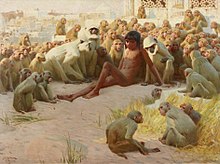


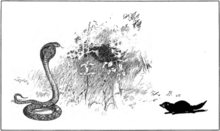
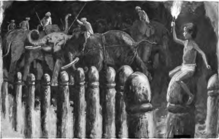

0 Response to "Northern Aurora Nature the Jungle Book Concept Art 1967"
Post a Comment